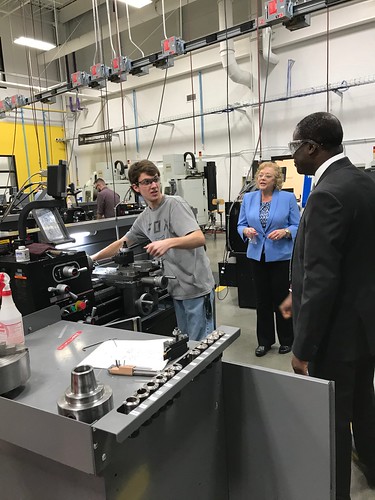Ntal imagery revealed that individual differences within the coordination of sounds
Ntal imagery revealed that person differences within the coordination of sounds and physique movements in piano duos had been positively correlated with performance on a job assessing the vividness of anticipatory auditory imagery [0]. Additionally, studies targeting temporal prediction straight have shown that the precision  of sensorimotor synchronization in genuine and virtual interpersonal coordination is positively correlated with temporal prediction skills [43,44], that are, in turn, correlated with auditory imagery skills [45]. It has been claimed that action simulation is driven by internal models instantiated within the central nervous technique [4,468] (b). Two varieties of internal model represent associations involving efferent motor commands and afferent sensory information and facts [49,50]. Forward models represent the causal relationship among motor commands and their effects around the physique and atmosphere. Inverse models represent transformations from intended action outcomes to the motor commands that generate them. It has been argued that rhythmic interpersonal coordination relies on separate forward and inverse models to simulate one’s own and others’ actions slightly ahead of time of their production [,4,five,52]. On this account, the coupling of `own’ and `other’ internal models within a `joint’ internal model facilitates fluent interpersonal coordination by allowing potential errors in timing to be anticipated and corrected just before they happen [4]. The sensorimotor transformations represented in internal models are acquired and trans-ACPD strengthened by means of activePhil. Trans. R. Soc. B 369:(ii) AttentionRhythmic joint action can be a kind of multitasking. To create a cohesive ensemble PubMed ID:https://www.ncbi.nlm.nih.gov/pubmed/25413830 sound, ensemble musicians spend focus to their very own actions (high priority) and those of other folks (reduced priority) even though concurrently monitoring the general integrated ensemble output. This kind of divided focus, which has been termed `prioritized integrative attending’ [32], involves a mixture of selective attention to self or other, and joint focus towards the connection amongst self along with other (see b). Prioritized integrative attending thus assists individuals to integrate their very own actions with others’ actions when sustaining autonomous manage of their very own movements [2,33]. In music performance, it facilitates ensemble cohesion by permitting coperformers to adjust their actions determined by the on-line comparison of your perfect ensemble sound and incoming perceptual information regarding the actual sound . Prioritized integrative attending is cognitively demanding for the extent that it requires the simultaneous segregation and integration of data from separate sources [32,346]. Analysis on multipart musical rhythm perception and production suggests that the flexibility expected for such segregation and integration is enabled by metric frameworks. Theseexperience and observational mastering [53]. Dependable and effective internal models are therefore a hallmark of expertise. Accordingly, it has been claimed that experienced ensemble musicians develop hierarchically arranged internal models which might be capable to represent events at numerous timescales [47,54] and to simulate a coperformer’s playing style by calibrating to his or her action method [55]. Additionally, anticipatory mechanisms and adaptive timing could be linked in hierarchically arranged `joint’ internal models of one’s own and others’ actions that permit interpersonal timing errors to become simulated and corrected in advance [56].
of sensorimotor synchronization in genuine and virtual interpersonal coordination is positively correlated with temporal prediction skills [43,44], that are, in turn, correlated with auditory imagery skills [45]. It has been claimed that action simulation is driven by internal models instantiated within the central nervous technique [4,468] (b). Two varieties of internal model represent associations involving efferent motor commands and afferent sensory information and facts [49,50]. Forward models represent the causal relationship among motor commands and their effects around the physique and atmosphere. Inverse models represent transformations from intended action outcomes to the motor commands that generate them. It has been argued that rhythmic interpersonal coordination relies on separate forward and inverse models to simulate one’s own and others’ actions slightly ahead of time of their production [,4,five,52]. On this account, the coupling of `own’ and `other’ internal models within a `joint’ internal model facilitates fluent interpersonal coordination by allowing potential errors in timing to be anticipated and corrected just before they happen [4]. The sensorimotor transformations represented in internal models are acquired and trans-ACPD strengthened by means of activePhil. Trans. R. Soc. B 369:(ii) AttentionRhythmic joint action can be a kind of multitasking. To create a cohesive ensemble PubMed ID:https://www.ncbi.nlm.nih.gov/pubmed/25413830 sound, ensemble musicians spend focus to their very own actions (high priority) and those of other folks (reduced priority) even though concurrently monitoring the general integrated ensemble output. This kind of divided focus, which has been termed `prioritized integrative attending’ [32], involves a mixture of selective attention to self or other, and joint focus towards the connection amongst self along with other (see b). Prioritized integrative attending thus assists individuals to integrate their very own actions with others’ actions when sustaining autonomous manage of their very own movements [2,33]. In music performance, it facilitates ensemble cohesion by permitting coperformers to adjust their actions determined by the on-line comparison of your perfect ensemble sound and incoming perceptual information regarding the actual sound . Prioritized integrative attending is cognitively demanding for the extent that it requires the simultaneous segregation and integration of data from separate sources [32,346]. Analysis on multipart musical rhythm perception and production suggests that the flexibility expected for such segregation and integration is enabled by metric frameworks. Theseexperience and observational mastering [53]. Dependable and effective internal models are therefore a hallmark of expertise. Accordingly, it has been claimed that experienced ensemble musicians develop hierarchically arranged internal models which might be capable to represent events at numerous timescales [47,54] and to simulate a coperformer’s playing style by calibrating to his or her action method [55]. Additionally, anticipatory mechanisms and adaptive timing could be linked in hierarchically arranged `joint’ internal models of one’s own and others’ actions that permit interpersonal timing errors to become simulated and corrected in advance [56].
